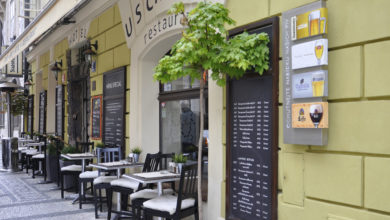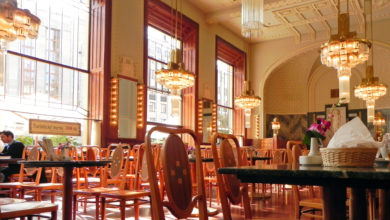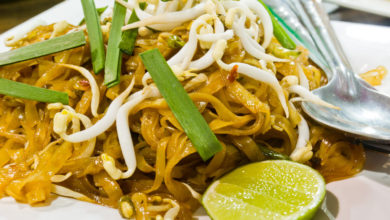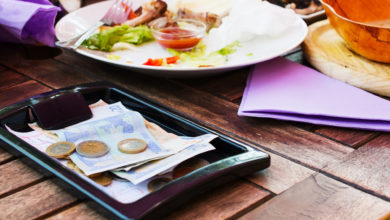Prague Typical Dishes
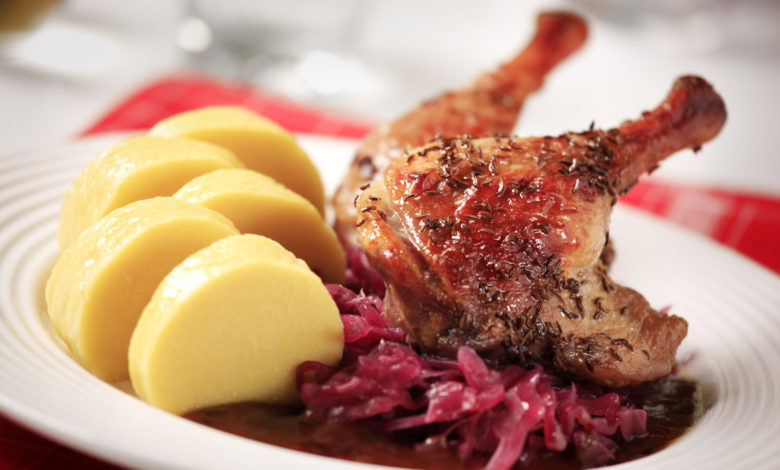
Czech cuisine and typical dishes in Prague have influenced and been influenced by the cuisine of surrounding countries. The first thing which you recognize on any restaurant menu is that Czech cuisine is more meat-based. But it was not always like that; traditionally, the meat had been reserved for once-weekly consumption, typically at weekends. The body of Czech meals typically consists of two or more courses; the first course is soup, the second course is the main dish, and supplementary courses such as dessert or compote may follow. Below you will find typical dishes, which you will find in nearly every restaurant serving typical Czech food.
Pork with dumplings and sauerkraut (Vepřo-knedlo-zelo)
This name is the shortened version for vepřové, knedlíky a zelí— pork, dumplings and sauerkraut. Heavy on fat and low on flavour, this is true Czech soul food. Order it instead of goulash, and you’ll impress your waiter with how acclimatized you are, assuming you pronounce it right, of course. There are different varieties, from sour to sweet.
Goulash (Guláš)
It is not quite as spicy as its Hungarian cousin, Czech goulash is essentially a rich beef stew and fewer vegetables. It must be accompanied with dumplings (knedlíky) on the side. Beef is the standard recipe of this staple dish, but you can sometimes find goulash using venison, chicken, and even vegetarian variants that are on the rise.
Marinated beef sirloin (Svíčková na smetaně)
Slices of pot-roasted beef tenderloin are served in a carrot-sweetened cream sauce, topped with a dollop of whipped cream, cranberries and a slice of lemon. Apparently, this is one of the most popular dishes in the Czech Republic, and you would be very unlikely not to find it on the restaurant menu. Like goulash, it’s unthinkable to eat it without the dumplings to mop up the sauce.
Pork knee (Vepřové koleno)
Do not get scared by the size of pork knee, ranging from 600g to 1.5kg. This is actually a very popular choice even amongst tourists. It is served mostly with sour vegetables, horseradish, bread and mustard.
Fried cheese (Smažený sýr)
If locals are not certain or confused about the menu or what to order, they usually stick to this vegetarian but not healthy choice. Comparable to fried mozzarella sticks, this battered block of deep-fried mild cheese is mostly served with French fries (hranolky) and a tartare sauce.
Halušky
The Germans call these coarse little noodles Spaetzle. They’re included in the Czech culinary canon as a nod to nearby Slovakia, from which they originate and with which Bohemia has shared so much history. You can either order them with sauerkraut or with creamy, sharp cheese. The dish is a filling and a cheap Eastern European alternative to pasta.
Schnitzel (Řízek)
This is another traditional Czech meat meal. The word “řízek” means “sliced or cut out of a piece”. These are usually small slices of veal, pork or chicken covered with breadcrumbs and fried on both sides. Řízek is served with potato side dishes or French fries.
Rabbit (Králík)
Rabbit is commonly bred in the countryside. Hare (zajíc) with the wild game are also served. Mutton, lamb, kid, boar, horse or deer are not so common.
Roast duck (Pečená kachna)
Very popular amongst locals and tourists alike is roast duck. It is served with bread or potato dumplings and braised red cabbage.
Trout (Pstruh)
Baked or grilled on butter and herbs (with or without garlic), this river fish is also found on most restaurants’ menus. Trout is often served with boiled or baked potatoes or French fries.
Sidedisch dumplings (Knedlíky)
Doughy dumplings are a facet of Czech national heritage whose significance would be difficult to over-estimate. They are the side dish of choice for many gravy-laden Czech dishes. In addition to the savoury varieties, made with bread, potato or bacon (špekové), knedlíky also come stuffed with fruit (ovocné knedlíky), the most popular variety being plums (švestkové).
Fish Dishes
The most popular fish in the Czech Republic is carp (kapr) which, come, Christmas Eve, gets ritually killed, chopped into steaks, then fried and breaded. The country’s trout farms provide lots of fresh pstruh, usually just fried completely in butter or deep-fried and breaded. The candát (pike perch) or native zander is a working-class dish and was introduced from this region to the West of Europe, particularly. Catfish (Sumec), tench (lín), pike (štika), ell (úhoř) and perch (okoun) are sometimes offered on restaurant menus and are certainly worth sampling.
Game Dishes
Among the Czech Republic’s most impressive culinary offerings – only recently getting the acclaim it merits – is wild game. Once autumn arrives, boar, venison, goose and wild duck are often served, usually with a sauce prepared using fruits from the wild like blueberries or rosehips. As these dishes only get served seasonally, if you see one on a menu, sample it.

